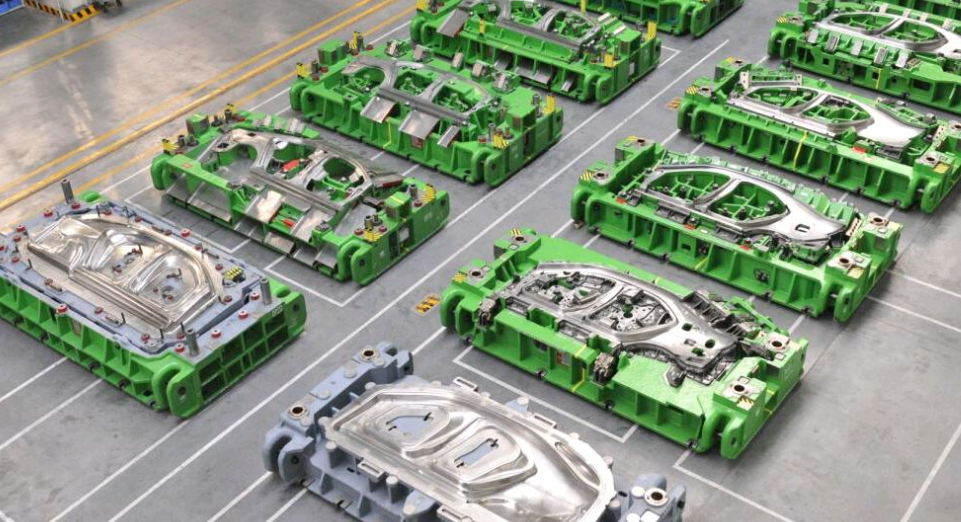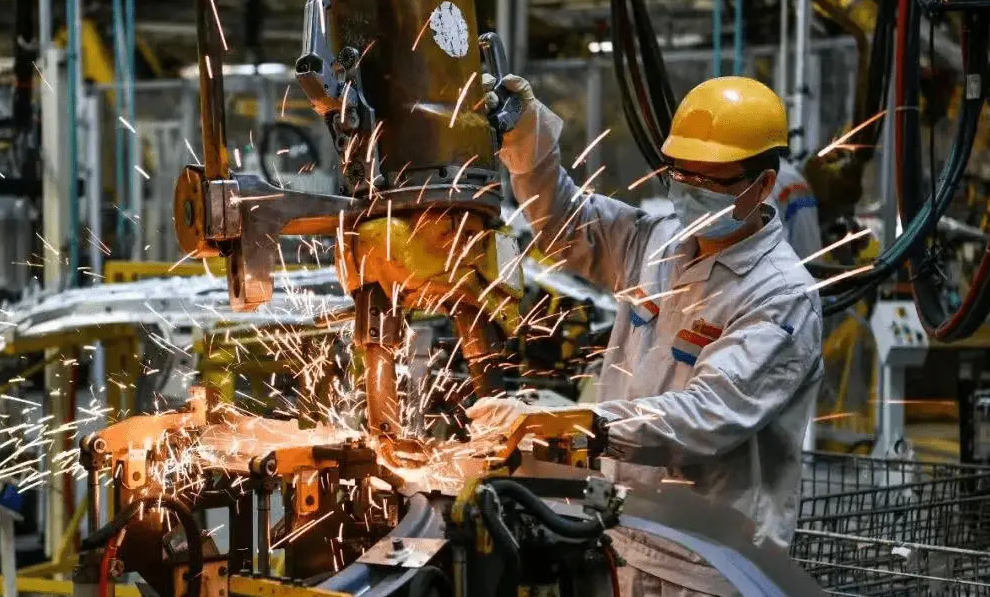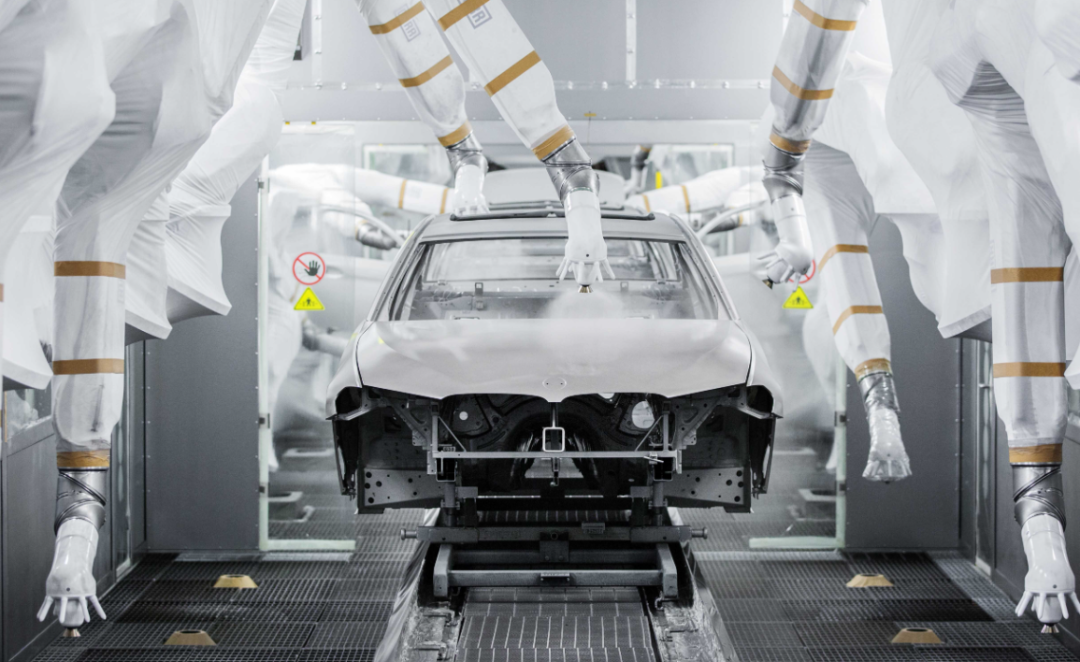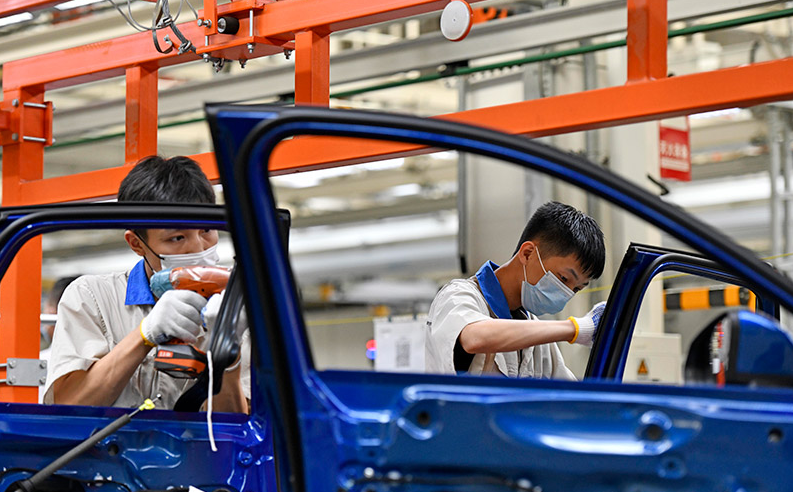 Part Machining / Mould
Part Machining / Mould Sheet Metal / Hand Plate
Customize&Volume Production
 English
English
 Part Machining / Mould
Part Machining / Mould  English
English

Automotive production processes and changes brought about by 3D printing technology
In today's era, cars have become a necessity for drivers in life. But how did a car you once damaged evolve from its humble beginnings to the beautiful vehicles we see on our roads? Today, let us like us step into the mysterious field of automobile production, explore the exquisite art of this modern industry, and understand the new changes brought by 3D printing technology to automobile production.
Stamping: laying the foundation for the car body
The first step in automobile production is stamping. This link is like creating a "solid skeleton" for the car, starting with a roll of automotive-specific steel plates with thicknesses ranging from 1.0mm to 1.2mm. These steel plates are cut into blocks of various sizes using advanced cutting equipment. Then, through the trimming process, the excess edges are removed to make them more regular. The plates are then distributed to the various presses.
The pressure of the stamping machine reaches thousands of tons. Under its strong pressure, steel plates are pressed into various complex-shaped stamping parts on the body, such as doors, hoods, etc. Each stamped component requires precise design and calculation to ensure its strength and accuracy. This not only requires advanced equipment and technology, but also requires careful operation by experienced engineers and technicians.

Welding: the key to joining the car body
When the stamped parts are ready, the welding process begins. Welding is like building a "strong bridge" for the car, connecting the various stamped parts together to form a complete body. In automobile production, there are three common welding methods: fusion welding, pressure welding and brazing.
Different welding methods are suitable for different parts and materials. For example, fusion welding is usually used to connect the main structural parts of the car body, such as the frame, chassis, etc.; pressure welding is suitable for the connection of some thin plate parts; brazing is mainly used for the connection of some special materials. During the welding process, technicians must strictly control the welding parameters to ensure welding quality.
The quality of welding is directly related to the strength and safety of the car body. Laser welding technology can make the welds finer and stronger, greatly improving the strength and rigidity of the car body. The number of welding points on the body of a car is about 3,000 to 5,000. These welding points are like the "key joints" of the body, tightly connecting various components together.

Painting: Give your car a beautiful coat
Although the body after welding has its basic shape, it still needs to be painted to show its charm. Painting is like putting a "gorgeous coat" on a car. It not only makes the car more beautiful, but also prevents the body from rusting.
The painting process is more than just spray painting. First, the car body needs to be cleaned to remove iron filings, oil stains and other impurities. Then, proceed with the steps of electrophoresis primer, mid-coat, spray topcoat, etc. The electrophoretic primer can provide the first line of anti-rust protection for the car body; the mid-coat can fill in the subtle flaws on the surface of the car body and improve the adhesion of the topcoat; the topcoat is the last line of defense for the car's appearance. It must not only have good gloss and color saturation, as well as being able to withstand the erosion of natural factors such as ultraviolet rays and acid rain.
Generally speaking, three layers of paint are used for car painting, and each layer has its own specific function. This process requires strict control of environmental factors such as temperature and humidity to ensure the quality and drying speed of the paint. The paint consumption of a car is about 5 to 8kg, of which the electrophoretic primer accounts for about 2 to 3kg, the mid-coat paint 1 to 2kg, and the topcoat 2 to 3kg.

The changes brought about by 3D printing
With the continuous advancement of technology, 3D printing technology is gradually emerging in the field of automobile production. During the automotive research and development stage, 3D printing can quickly produce complex parts models, helping engineers better conduct design verification and optimization. Compared with traditional manufacturing methods, 3D printing can greatly shorten the research and development cycle and reduce costs.
In the automobile production process, some special-shaped or small-volume parts can be efficiently produced through 3D printing technology. For example, some personalized interior parts, customized racing parts, etc. 3D printing materials are also becoming more and more diverse, including high-strength plastics, metals, etc., which can meet the performance requirements of different parts.
In addition, 3D printing also provides new ways to reduce vehicle weight. By optimizing design and using lightweight materials, 3D printed parts can reduce weight and improve a vehicle's fuel efficiency and performance without losing strength.

Final assembly: the last step in automobile production
Final assembly is the last and most complex step in automobile production. In the final assembly shop, various parts such as body, chassis, interior and so on will be assembled together to form a complete car.
First, assemble the chassis assembly, including suspension system, steering system, transmission, brakes, powertrain, front and rear axles, tires, etc. These components are like the "core power and supporting limbs" of the car, providing power and support for the car. Then, install other body coverings such as seats, windshield, doors, etc. The installation of the interior parts requires more delicate operations to ensure that the installation position of each component is accurate, while taking comfort and aesthetics into consideration.
During the final assembly process, technicians need to strictly follow the process to ensure the installation quality of each component. The number of parts in a car is about 20,000 to 30,000, which requires a high degree of automation and intelligent production equipment, as well as a strict quality control system.

Summarize
Automobile production is a complex and delicate process, and every link needs to be strictly controlled. From stamping to welding, from painting to final assembly, every step embodies the wisdom and sweat of countless engineers and technicians. The introduction of 3D printing technology has brought new opportunities and challenges to automobile production. In the future, with the continuous advancement of science and technology, automobile production technology will continue to innovate and develop, and 3D printing will also play a more important role in the automotive field. We firmly believe that in the near future, cars will become more intelligent, environmentally friendly, and safer, bringing more convenience and comfort to people's travels.
